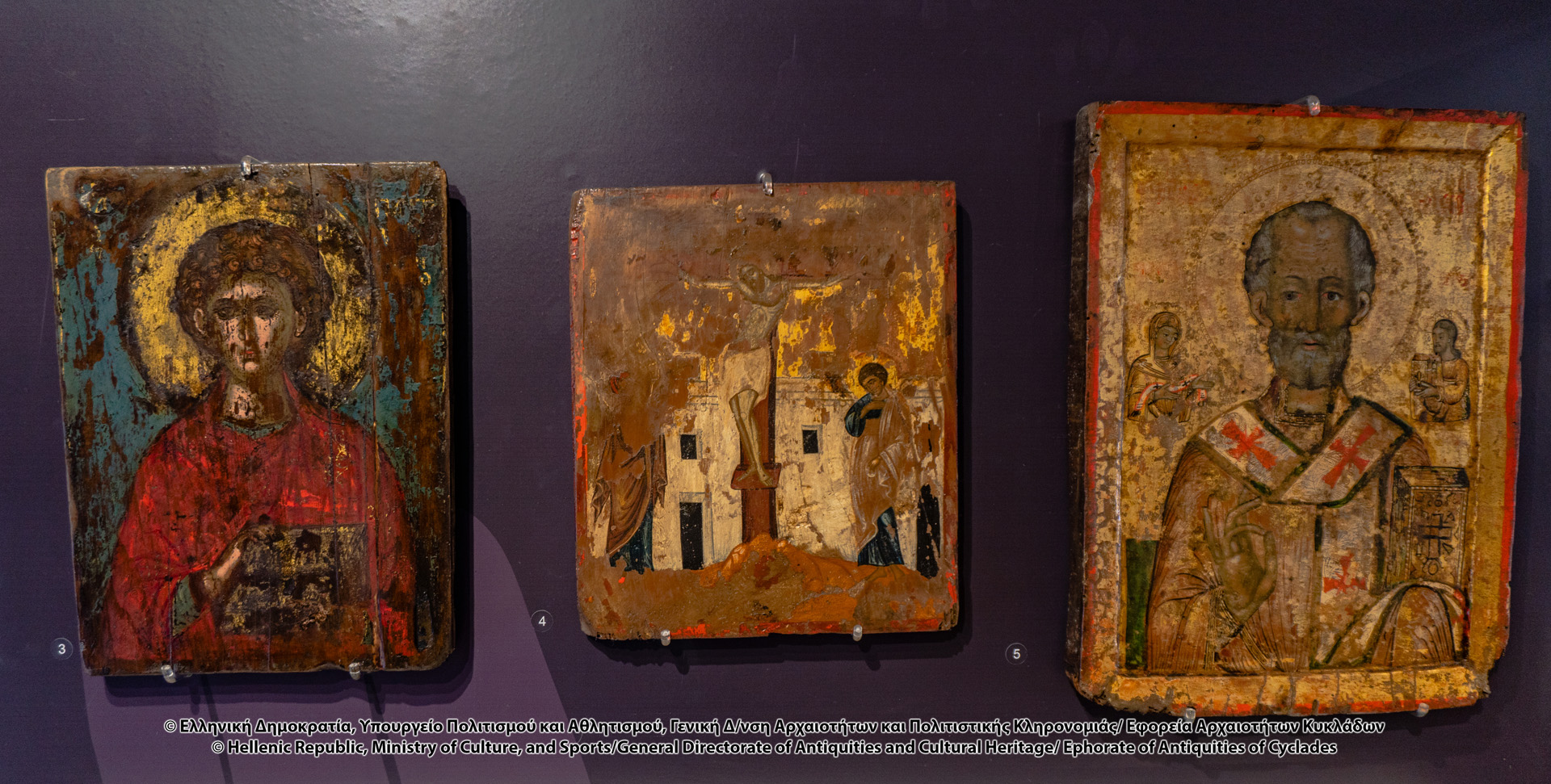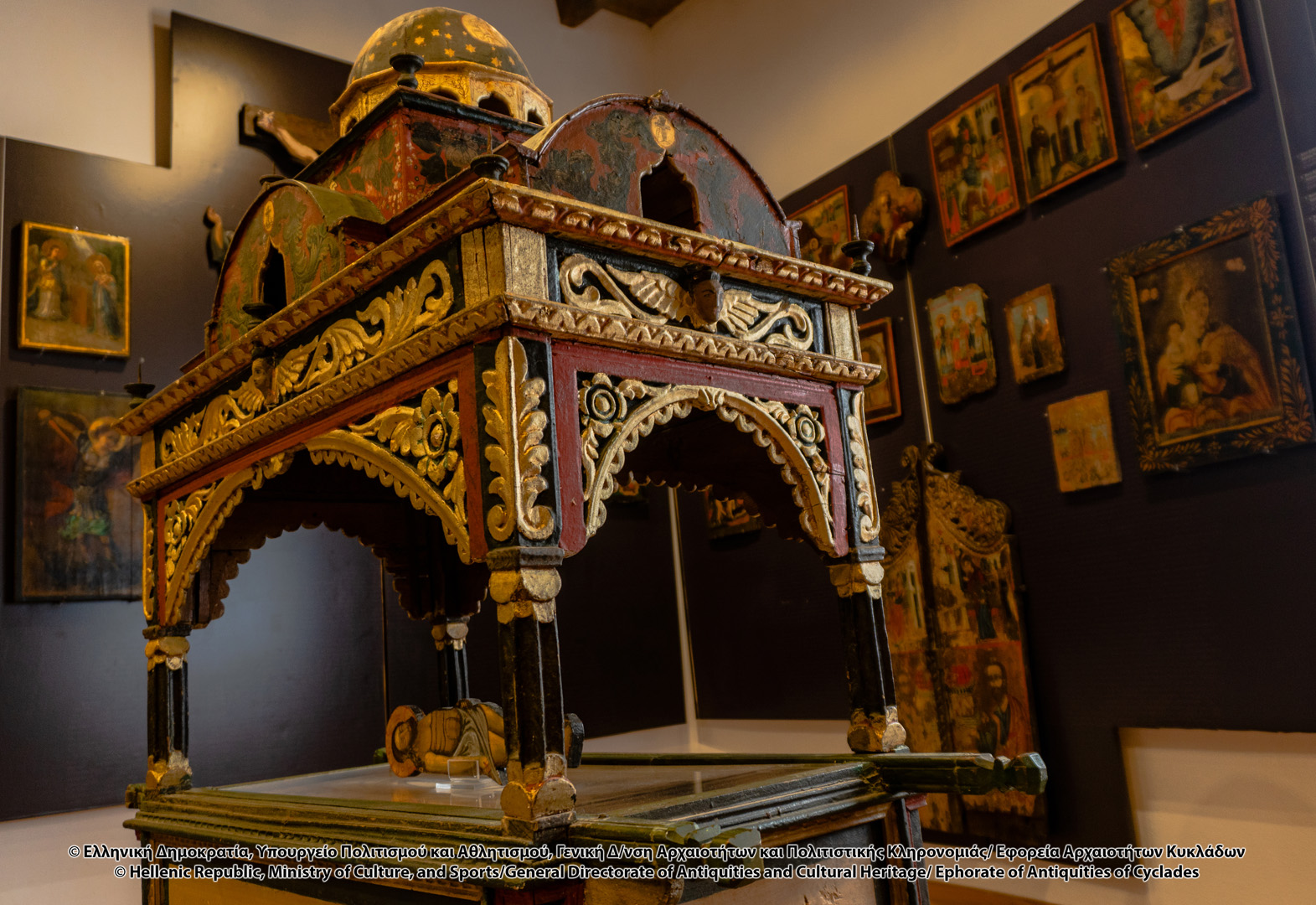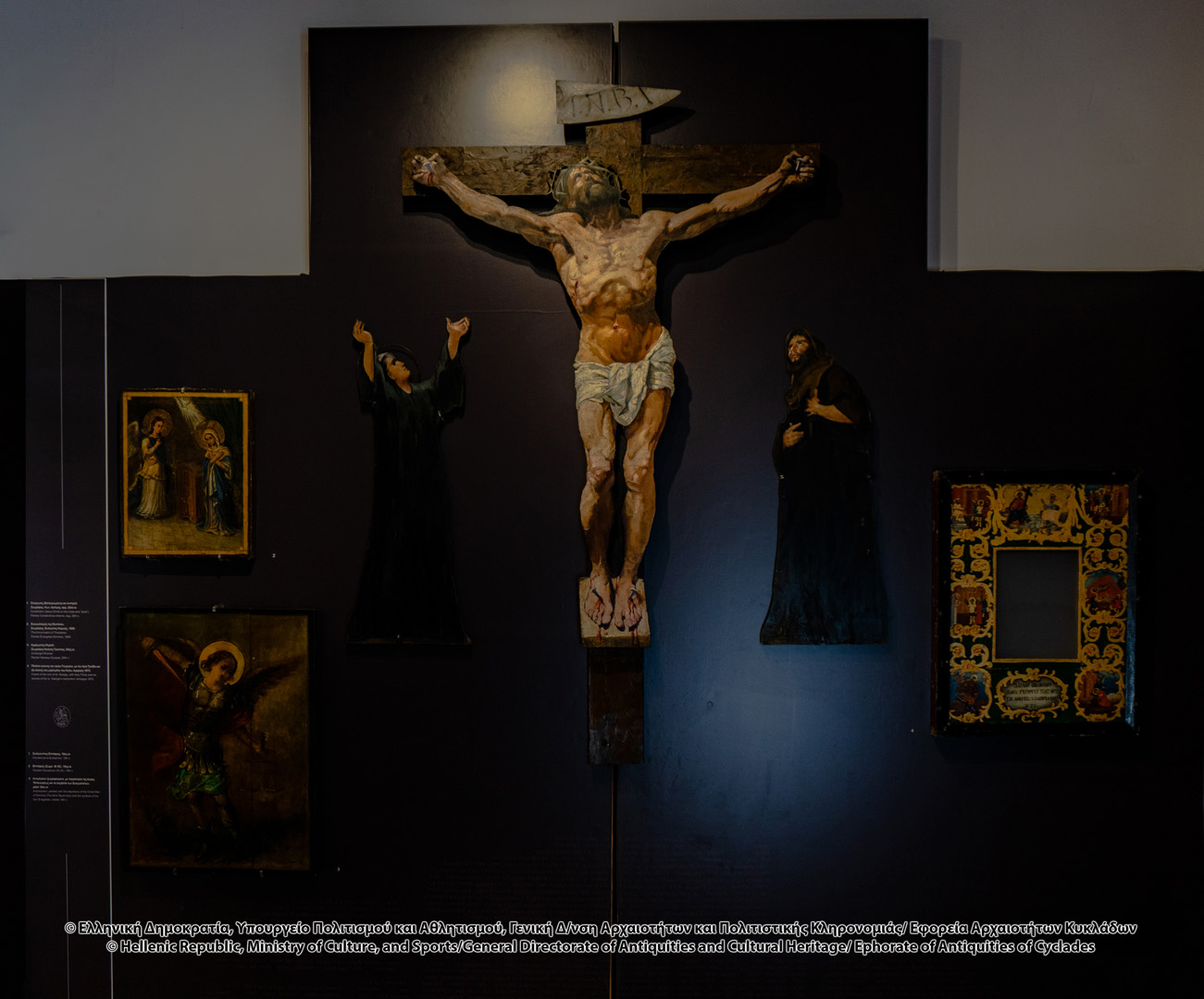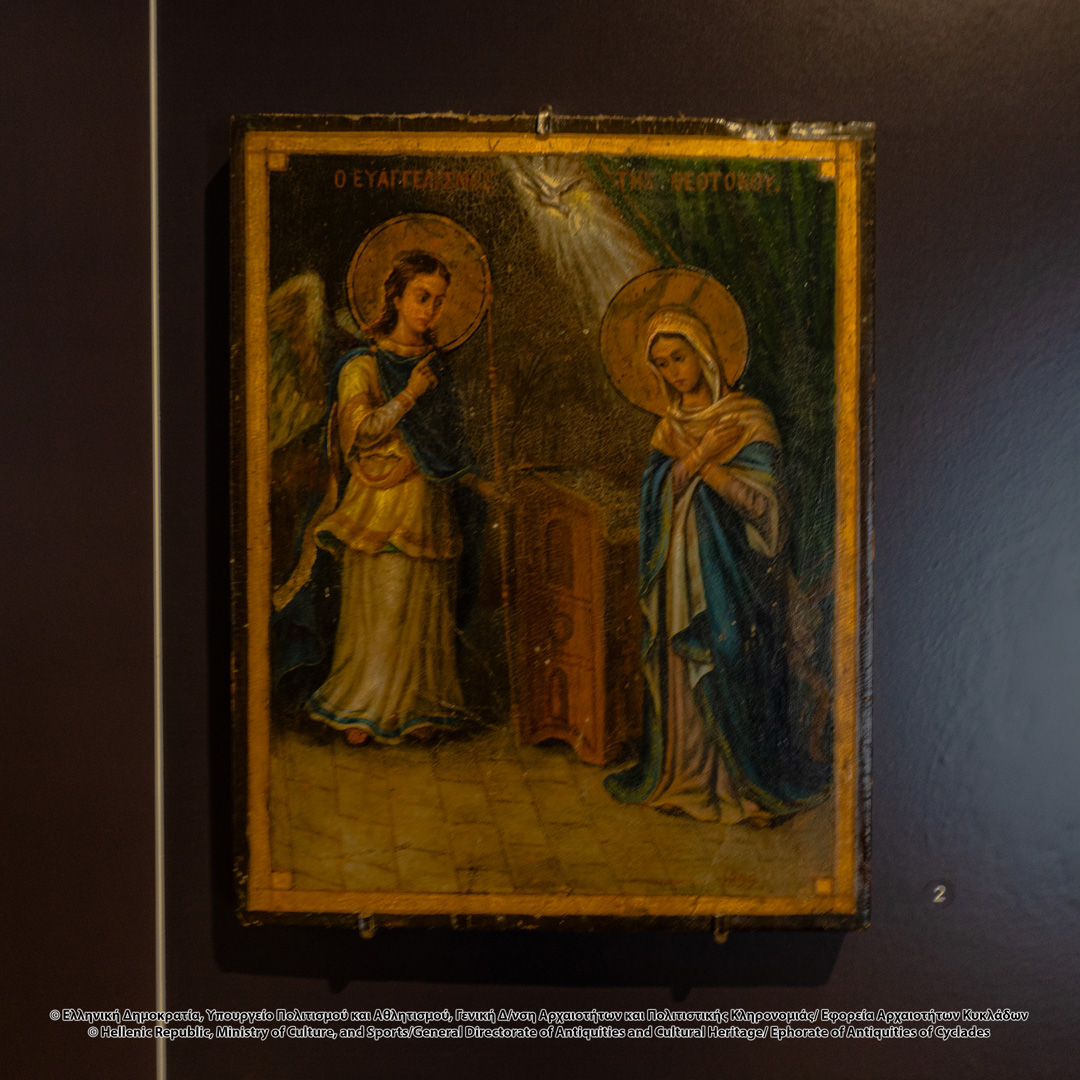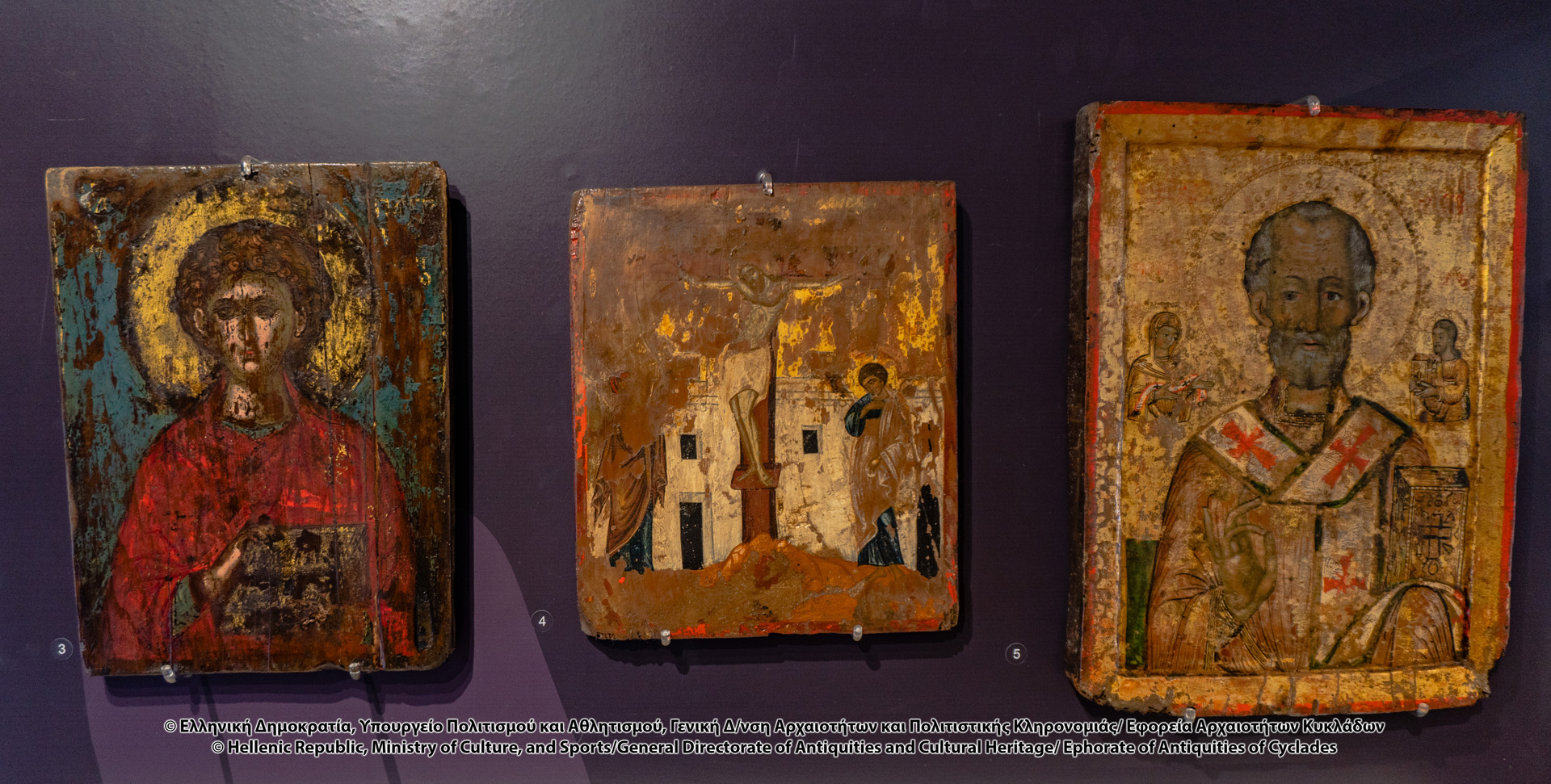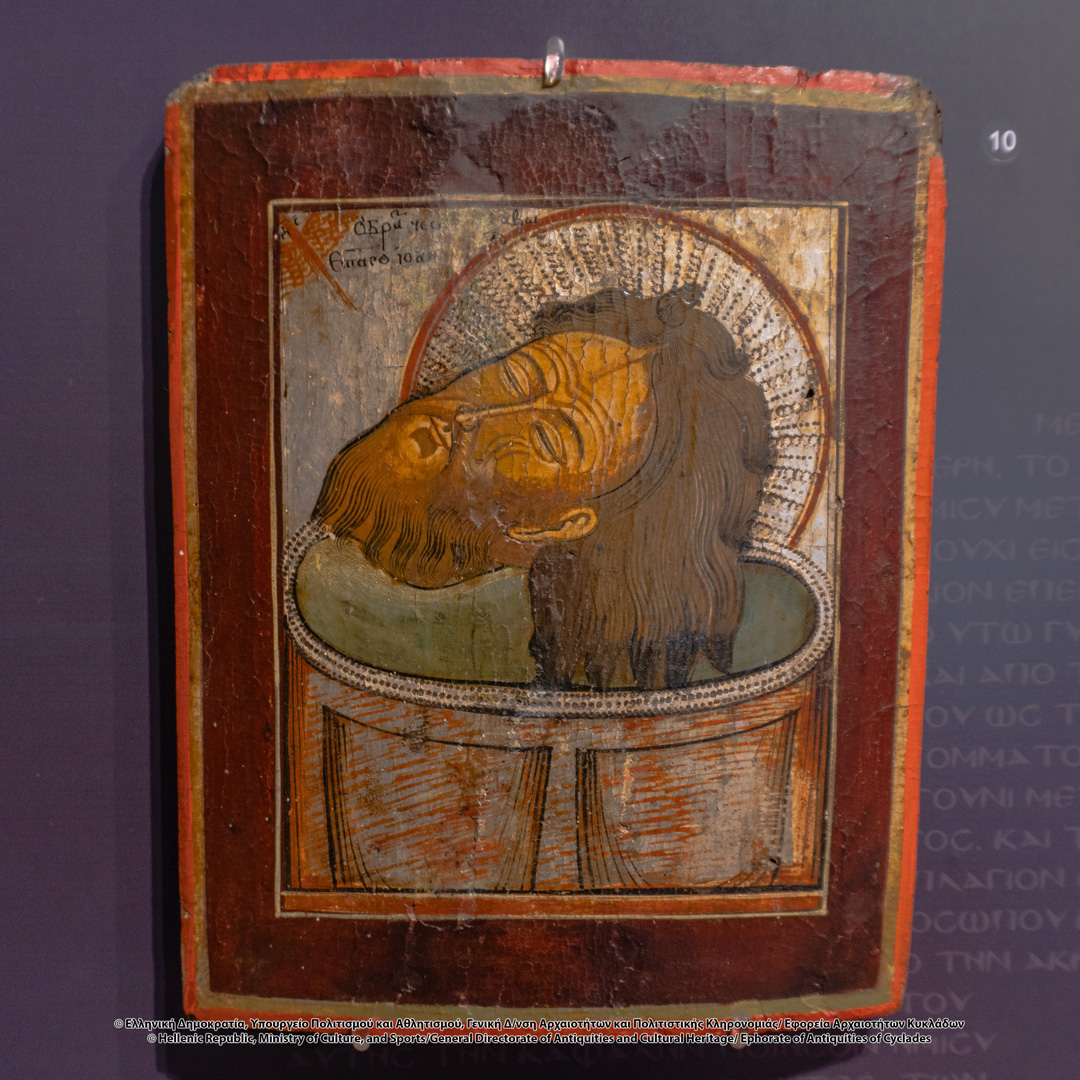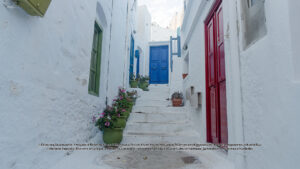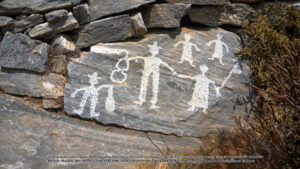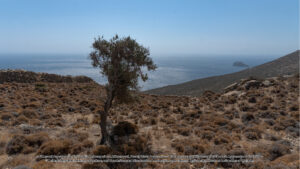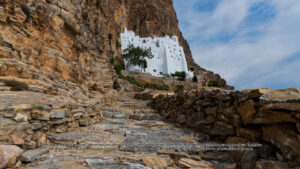According to the Archpriest Thomas L. Synodinos “Our late fathers, inhabitants of the small, but also historic island of Amorgos, despite their occasional poverty, the limited materials and meager means at their disposal, have already made from the first Christian years, notable Holy Monasteries and Churches, but also humble Eucharistic Houses, leaving to us a rich and multidimensional tradition…
Amorgos is full of such works of worship of God, works of faith and culture of all times, some lying in ruins, such as the early Christian basilicas, with remarkable sculptures in loco, but also others that continue their operation, for centuries now.” The exhibition core of the Ecclesiastical Collection are Christian relics of great historical and religious value, which have been collected over the years on the island of Amorgos, by priests or ordinary people, and have been preserved for all this time, in the Church of Panagia (Virgin Mary) of Episkopi, the Metropolis of the Chora, all being exceptional works of architecture, sculpture, iconography, embroidery, metalwork of Early Christian, Byzantine and Post-Byzantine times. Unfortunately, many more relics have been destroyed or lost in private collections.
On the ground floor there are sculptures of marble architectural features from basilicas of the Early Christian-Early Byzantine period (324-842), which have been found scattered or used de novo in newer churches in the area of Amorgos, confirming the written testimonies of the 6th century, a period of religious enthusiasm and relative economic well-being, as well as the promotion of Amorgos to a Diocese. Among them are marble ballast walls, parts of the iconostasis architrave, the cippi, the legs of the alter, but also tomb inscriptions, carved either by Amorgian craftsmen in local dolomitic limestone and to standards set by Constantinople prevailing throughout Byzantine territory, or indicated by laboratories of other centers (Proconnesus, Paros).
The collection of the ground floor continues with sacred utensils, expressing the gratitude of the believer, his reverence and devotion to God, a reason why their creation is classified at the highest levels of art: holy grails (chalice), trays, pyxes, silver-tied Gospel, crosses of blessing and sanctification, wood-carved seals for the preparation of the offering and the breads, silver candles, candlesticks, copperplate Antimension, all gifts of the believers for the performance of the Divine Liturgy, the Holy Mysteries and Ceremonies. Also, silver covers of icons but also offerings, visible signs of the absolute trust of people in the miraculous power of God. A sample of exceptional art is the wood-carved canopy of the Epitaph of the 18th century. The visitor’s interest is also attracted by the coin of Robert, King of Naples, indicative of the contacts of Amorgos during the 14th century.
A particularly important part of the Collection on the first floor of the building is the total of about fifty manuscripts of the Church of the Diocese, representing all the Greek publishing houses of Venice, covering the period 1588-1820, as well as manuscripts. The visitor will also have the opportunity to admire sacred icons, dating from the 16th to the 20th century. These are works by Cretan, Amorgian and other Cycladic artists, as well as icons of Russian art, which may have been brought by revered captains and other sailors of the island, returning from their voyages to Odessa and other Russian ports.
The Ecclesiastical Collection of Amorgos also includes a rich collection of sacred vestments and their accessories, which have undergone a long evolution, differentiating and brightening the attire of the clergy when the Holy Mysteries are performed. Ecclesiastical embroidery was also associated with the creation of the vestments, expressing the symbolism of the vestments. Among them, vestments and memoirs of prominent episcopal and hierarchical personalities, who with their beneficial presence associated their name with the island of Amorgos, such as the late Pope and Patriarch of Alexandria Parthenios III, for whom Amorgos was a place of rest and spiritual recreation.
The Ecclesiastical Museum of Amorgos bears the name of the eminent friend of the island, the late Archbishop Christodoulos, whose Holy Surplice and personal ecclesiastical objects complete the Collection, exhibited in a separate room of the Museum. They have been donated by the Holy Archdiocese of Athens through the Archpriest Thomas Synodinos, who also offered ecclesiastical relics from his personal collection in memory of Archbishop Christodoulos and his beloved deceased relatives.
Means of access:
CAR
,
BUS
,
TAXI
,
TRADITIONAL PATH: "Palia Strata" Route
Chora – Monastery of Hozoviotissa – Kapsala – Asfontylitis – Potamos – Cove of Aegiali
Starting Point: "Kalogerikos" Point in the Chora.
,
TRADITIONAL PATH: "Fotodotis" Route
Chora – Milies – Agia Irini – Katapola
Opening hours:
In summer the museum remains open every day, while in other periods it can be opened if there is interest, by contacting Father George.
Entry fees:
Free

